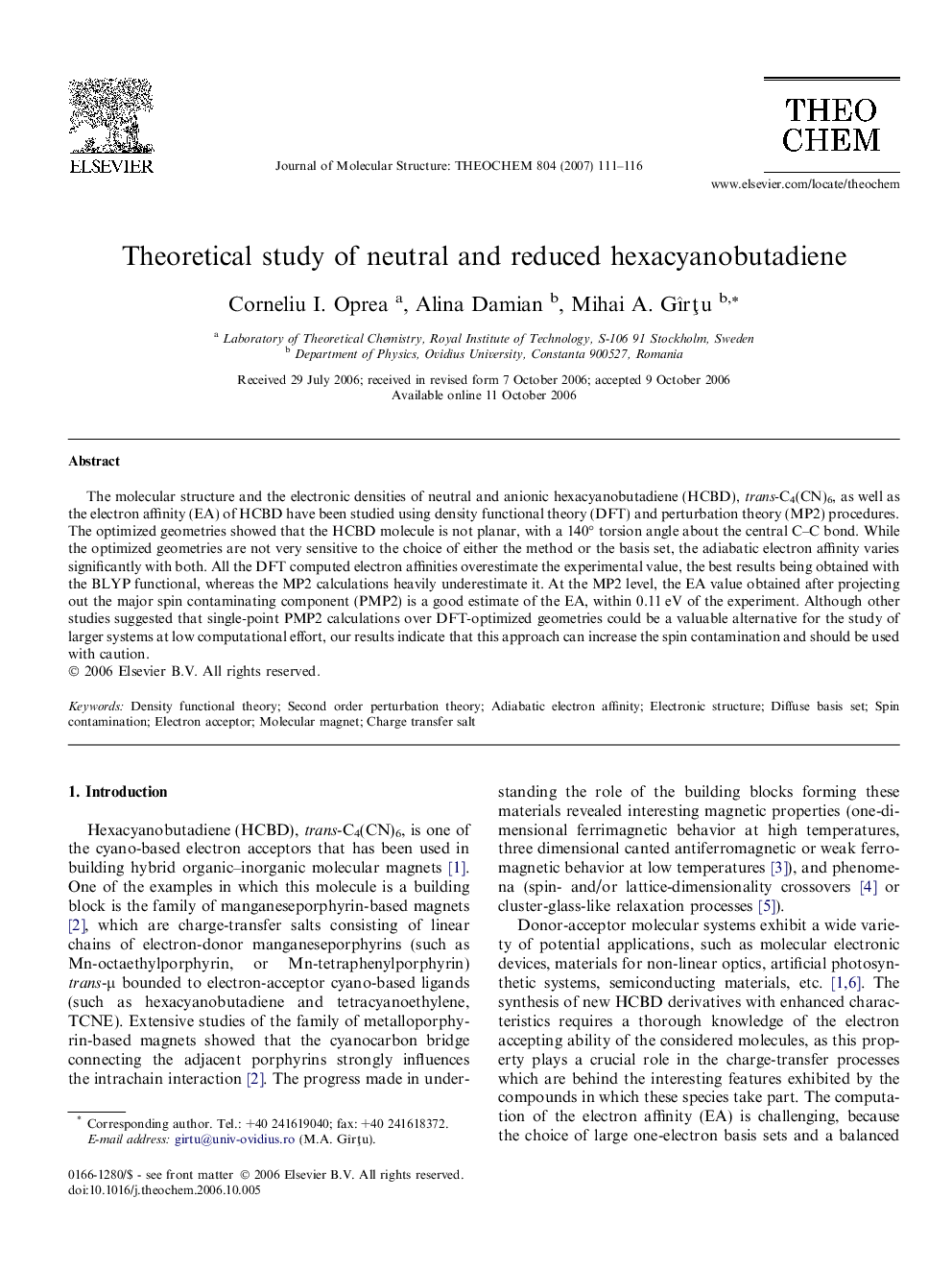| Article ID | Journal | Published Year | Pages | File Type |
|---|---|---|---|---|
| 5418857 | Journal of Molecular Structure: THEOCHEM | 2007 | 6 Pages |
Abstract
The molecular structure and the electronic densities of neutral and anionic hexacyanobutadiene (HCBD), trans-C4(CN)6, as well as the electron affinity (EA) of HCBD have been studied using density functional theory (DFT) and perturbation theory (MP2) procedures. The optimized geometries showed that the HCBD molecule is not planar, with a 140° torsion angle about the central C-C bond. While the optimized geometries are not very sensitive to the choice of either the method or the basis set, the adiabatic electron affinity varies significantly with both. All the DFT computed electron affinities overestimate the experimental value, the best results being obtained with the BLYP functional, whereas the MP2 calculations heavily underestimate it. At the MP2 level, the EA value obtained after projecting out the major spin contaminating component (PMP2) is a good estimate of the EA, within 0.11 eV of the experiment. Although other studies suggested that single-point PMP2 calculations over DFT-optimized geometries could be a valuable alternative for the study of larger systems at low computational effort, our results indicate that this approach can increase the spin contamination and should be used with caution.
Keywords
Related Topics
Physical Sciences and Engineering
Chemistry
Physical and Theoretical Chemistry
Authors
Corneliu I. Oprea, Alina Damian, Mihai A. Gîrţu,
